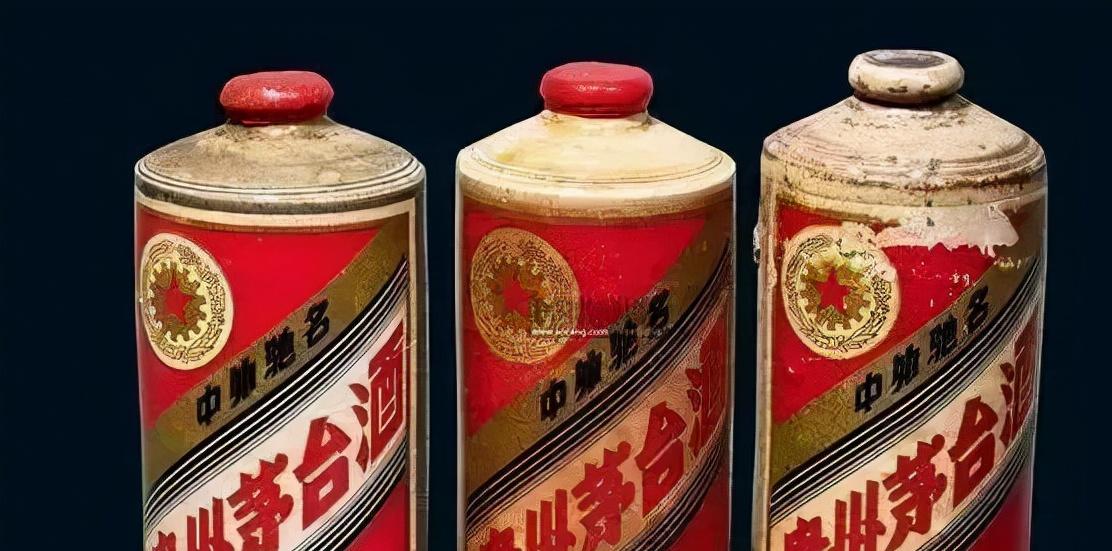Guizhou, referred to as "Qian", is located in the southwest region of China, rich in fine wine, the following to take you to see, Guizhou's "old eight famous wines".
Guizhou Old Eight Moutai

In 1956, the clay pottery wine bottle Moutai wine was shipped
Origin: Produced exclusively in Moutai Town, Renhuai City, Guizhou Province
Process: high-temperature koji-making, high-temperature accumulation fermentation, high-temperature distillation.
Features: clear and transparent color, mellow and fragrant, soft and smooth entrance, clear and sweet, long-lasting fragrance, people call the unique aroma of Moutai wine "Maoxiang".
Guizhou Old Eight Dong Wine
Dong liquor from 1983 to 1988
Origin: Zunyi City, Guizhou
Process: With glutinous sorghum as the main raw material, more than 140 kinds of Chinese medicinal materials and wheat koji are used to make koji, and small koji cellars are used to make sake, and large koji cellars are used to make sake, and liquor is steamed in a string to obtain wine.
Features: The wine is clear and transparent, the aroma is elegant and comfortable, the entrance is mellow and rich, and the sweet taste is long after drinking.
Guizhou Old Eight Great Mei Cellar Wine
80s Mae Cellar
Origin: Meitan, Guizhou
Process: Sorghum, wheat, glutinous rice, corn, grain as raw materials, the use of strong aromatic liquor traditional production process, steaming mixed, continuous fermentation, distilled, stored, blended.
Features: it has the characteristics of clear and transparent, aromatic, sweet and refreshing, long aftertaste and so on. In recent years, Meijiao has "three spices" going hand in hand, and is one of the few wine companies that also has strong aroma, sauce aroma, and original tea aroma technology.
Guizhou Old Eight Duck Creek Cellar Wine
Duck Creek cellar wine from the 80s
Origin: Yaxi Town, Zunyi City
Process: layered cellaring, layered distillation process, multiple fermentation and multiple distillations, staged cellaring, slow work out of wine.
Features: the cellar aroma is rich, soft and clean, sweet but not greasy, fragrant but not violent, and the aftertaste is long. Although it is a strong liquor, it has the characteristics of a strong flavorful entrance and a sauce flavor aftertaste.
Guizhou Old Eight Great Pingba Cellar Wine
80s Golden Kettle Brand Pingba Wine
Origin: Pingba, Guizhou
Process: with sorghum and glutinous grain as the main raw materials, rice and wheat are selected to make Xiaoqu and Daqu respectively, and at the same time with dozens of kinds of traditional Chinese medicines, and then take Xiaoqu saccharification, Daqu fermentation and other unique processes to brew, the cellar from the first half of the year to a year, blended.
Features: elegant aroma, mellow wine, comfortable medicinal aroma, sweet and refreshing.
Guizhou Old Eight Great Ann Wine
Ansai in the 80s and 90s
Origin: Anshun, Guizhou
Process: Using glutinous sorghum and glutinous grain as raw materials, made of wheat, high temperature Daqu mixed steaming mixed combustion layered distillation. The quantity and quality of the wine, the graded storage, and then through long-term storage and then blended.
Features: colorless and transparent, kiln incense is stronger, mellow and sweet, refreshing and not dry.
Guizhou Old Eight Great Xi Shui Daqu
Xi Shui Daqu from 1986 to 1992
Origin: Guizhou Xishui
Process: The traditional mixed steaming and mixing process is adopted, the fermentation period is about two months, and then the low temperature is entered, and the cellar is sealed and stored for more than 1 year, and it is mixed.
Features: colorless transparent, rich aroma, sweet and refreshing, soft and soft, long aftertaste.
Guizhou Old Eight Golden Sand Cellar Wine
Sand cellar wines from the 70s and 80s
Origin: Jinsha, Guizhou
Process: using sorghum, rice and glutinous grain as raw materials, using locally produced fragrant wheat and rice with traditional Chinese medicine to make koji, wheat and bran and Chinese herbal medicine to step on incense koji, koji saccharification, fragrant koji under the cellar, elaborate production.
Features: clear and transparent, ester aroma rich, sweet and mellow, endless aftertaste style.